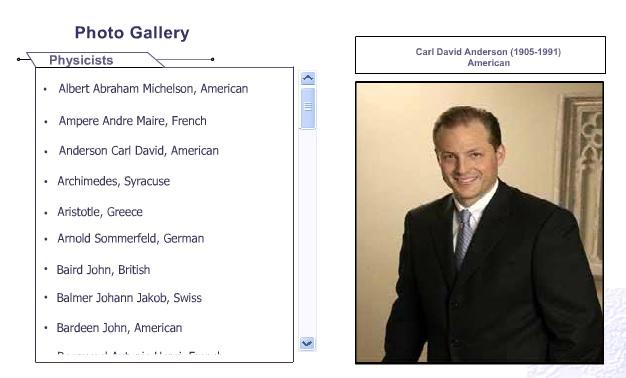Scientists
Scientists
Famous Scientists
Friedrich William Herschel
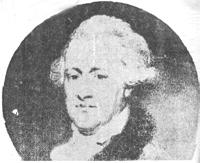
William Herschel’s father played in an army band in Hanover, Germany. In 1757,William was sent to England. He became a music master in Bath, in the west of England.
Herschel had an instance intellectual curiosity. His profession got him interested in the theory of harmonics, and he learnt mathematics. He then developed an interest in optics, and in astronomy. Dissatisfied with the telescopes in the market, he started making his own. With his sister Caroline, he started a complete, systematic survey of the stars.
How does one find the distance to the stars? Suppose there are two stars close to each other in the sky, one near us and the other distant. As the earth goes around the sun, the nearer star should appear to move relative to the father one. This was an idea suggested by the Italian scientist Galileo, and Herschel started looking at close pairs of stars.
On 13 March 1781, he noted “a curious either nebulous star or perhaps a comet. “This was the seventh planet Uranus! Several astronomers had earlier seen it, thinking it was a star. Herschel was only one who repeated his observation, to find the “star” had moved.
The discovery made Herschel famous. He was awarded the Copley medal by the Royal Society of London. The English King became his patron.
Herschel continued on his sky survey. As described on page 50, he was able to show that Milky Way that we see in the sky is actually the part of our galaxy, a huge, idli- shaped collection of crores of stars.
Herschel was intrigued by the nebulae. He built larger telescopes to examine them, the largest being one with a 4-foot mirror in 1789. The Herschels counted 2000 nebulae and clusters. Their work was finally completed in the New General Catalogue and Index Catalogues of 1896. 15000 objects were listed in it. All this had been done purely visually, without aid of photography!
Some of Herschel’s ideals were proved wrong later. He thought that sunspots were holes in the sun, through which one could see the dark rock under the flames.
Towards the end oh his life, Herschel had realized that many close pairs of stars were actually double stars. An example was the star Castor, in Gemini. By repeated observation, Herschel realized that the twin stars were moving around each other every 342 years. For the first time, Newton’s law of gravity was shown to hold outside the solar system, in the realm of the stars.
Henry Ford (1863-1947)
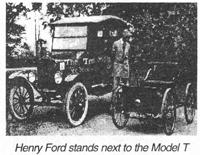
The automobile has played a major role in shaping society in the twentieth century. More a technologist than a scientist, Henry Ford was instrumental in setting up the modern automobile industry.
One of eight children, Henry was born into a farming family near Detroit. At sixteen, he went to work in Detroit, where he came in contact with the internal combustion engine.
After three years, he returned to his farm. There, he spent almost a decade building mechanical tools to help in the farm, including a tractor based on a stream engine.
He moved back to Detroit and was soon the chief engineer at an electricity distributing company. In his spare time he did a lot of experiments with automobiles and built a variety of petrol- based vehicles.
Ford was not willing to market his initial vehicles-his drive for perfection made him constantly try to improve on his efforts. Finally, in 1903, he marked his first car through the Ford Motor company.
In October 1908 Ford introduced his famous Model T. The model T was responsibilities for transforming the car from being a rich man’s luxury to an ordinary man’s utility. In two decades, 17 million Model Ts were sold-about half the total number of cars sold in that period!
Lise Meitner (1872-1962)
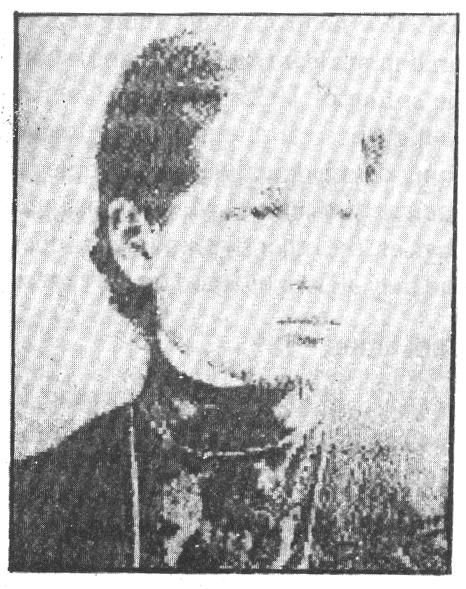
Berlin July 13 ,1938 .the day on which Lise Meitner, sixty years old her very life in danger escaped from Germany to Holland in the company of Dirk Coster with just a valise in hand.
Hold on to that Image. Lise Meitner, who played a crucial role in the discovery of nuclear fission, the process that led to atomic bombs and power reactors, fleeing for life, stripped of job and position, leaving behind friends and beloved laboratory, carrying only a passion for physics .it is a sad fact that Meitner is a largely forgotten name today, but at that time, she was considered one of the best experimental physicists in the world Albert Einstein used to refer to her as “our own Marie curie”.
Meitner led the collaboration with Otto Hahn and Fritz Strassman that led to the discovery of fission, but it was Hahn alone who got the Nobel Prize for the work. Another sad fact, a result of the times she lived in.
The collaboration
Lise Meitner was born an Austrian, in Vienna; in 1872 she was fortunate to be among the first women to be admitted to the university, and learnt mathematics and physics from the great Ludwig Boltzmann. Later, she moved to Berlin and found a mentor and friend in Max Planck as well as a collaboration in the chemist Otto Hahn. During the 1920’s the Hahn – Meitner pair published many results on radioactivity.
In January 1934, Irene curie and Frederic Joliot discovered artificial radioactivity, the production of new radioactive isotopes in the process of bombarding light elements (like aluminium) with nuclei of helium. Lise Meitner was greatly excited by this and she not only confirmed these findings with her own experiments but went on to further explore these processes. Meanwhile Enrico Fermi started Working in Rome on the idea that artificial radio activity could be produced using neutrons. Soon he discovered that on neutron bombardment, uranium yielded new ‘activities’ whose chemistry appeared different from that of uranium, or for that matter, any other element. This started the study of elements ‘beyond uranium’.
Lise not joined the search for these trans- uranes, but also got Otto Hahn interested. She started detailed studies of neutron energy and was among the first to note that slow were more readily captured in nuclear reactions than fast ones. By the spring of 1935, Hahn, Meitner and the young physical chemist Strassmann, were doing detailed analyses of a whole range of nuclear processes. Meitner provided the physics, the other two studied the chemistry, and they all worked hard on the experiments.
David Hilbert
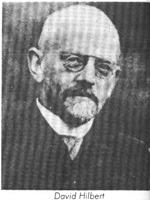
David Hilbert was hardly 31 years old when he was appointed as a full professor at the University of Koenigsberg. Within two years, he moved to take up a chair in Goettingen, where he continued to teach for the rest of his career.
Hilbert’s first work was on invariant theory and, in 1888, he proved his famous Basic Theorem. When he submitted his paper to the mathematische Annalen, its editor, the celebrated mathematician Felix Klein, wrote:
I do not doubt that this is the most important work on general algebra that the Annalen has ever published.
Hilbert’s work in geometry had the greatest influence in that area after Euclid. A systematic study of the axioms of Euclidean geometry led Hilbert to propose 21 such axioms and the analysed their significance. He published
Grundlagen der Geometrie in 1899, putting geometry in a formal axiomatic setting. The book had a great influence in promoting the axiomatic approach to mathematics which has been one of the major characteristics of the subject throughout the 20th century.
In 1900, at the turn of the century, David Hilbert was asked to address the Congress of Mathematicians. Hilbert spoke on problems of Mathematics. His speech was full of optimism for Mathematics in the coming century and he felt open problems were the sign of vitality in the subject. Hilbert posed a set of 23 problems to the world of mathematics with the humble words:
“permit me in the following, tentatively as it were, to mention particular definite problems, drawn from various branches of mathematics, from the discussion of which an advancement of science may be expected.”
These 23 problems challenged (and still today challenge) mathematicians to solve fundamental questions.
Hilbert’s problems included the continuum hypothesis, the well ordering of the reals, Goldbach’s conjecture, the transcendence of powers of algebraic numbers, the Riemann hypothesis, the extension of Dirichlet’s principle and many more. Many of the problems were solved during this century, and each time one of the problems was solved it was a major event for mathematics.
Today Hilbert’s name is often best remembered through the concept of infinite-dimensional space, later called Hilbert space. This concept is very useful in mathematical analysis and quantum mechanics. Making use of his results on integral equations, Hilbert contributed to the development of mathematical physics by his important memoirs on kinetic gas theory of radiations.
Some have claimed that in 1915 Hilbert discovered the correct field equations for general relativity before Einstein but never claimed priority. This is not strictly correct, though Hilbert did indeed come up with similar ideas independently.
In 1934 and 1939 Hilbert published (with Paul Bernays) two volumes of Grundlagen der Mathematik, which were intended to lead to a ‘proof theory’, a direct check for the consistency of mathematics. Kurt Goedel, in a Celebrated paper, showed this aim to be unachievable.
Hilbert contributed to many branches of mathematics, including invariants, algebraic number fields, functional analysis, integral equations, mathematical physics, and the calculus of variations. Hilbert’s mathematical abilities were nicely summed up by Otto Blumenthal, his first student:-
“Insofar as the creation of new ideas is concerned, I would place Minkowski higher, and of the classical great ones, Gauss, Galois, and Riemann. But when it comes to penetrating insight, only a few of the very greatest were the equal of Hilbert.”
Among Hilbert’s students were the mathematician Hermann weyl, the famous world chess champion Immanuel Lasker, and the logician Frank Zermelo.
Hilbert received many honours. In 1905 the Hungarian Academy of Sciences gave a special citation for Hilbert. In 1930 Hilbert retired and the city of Koenigsberg made him an honorary citizen of the city. He gave an address which ended with six famous words showing his enthusiasm for mathematics and his life devoted to solving mathematical problems:-
Nobel Prize Winners
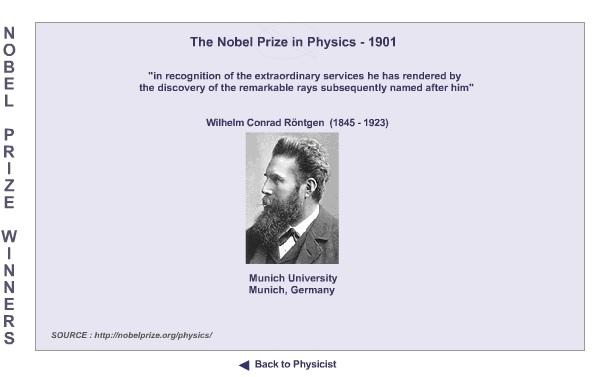
Physicists Gallery
Source: Portal Content team
Last Modified : 3/2/2020
